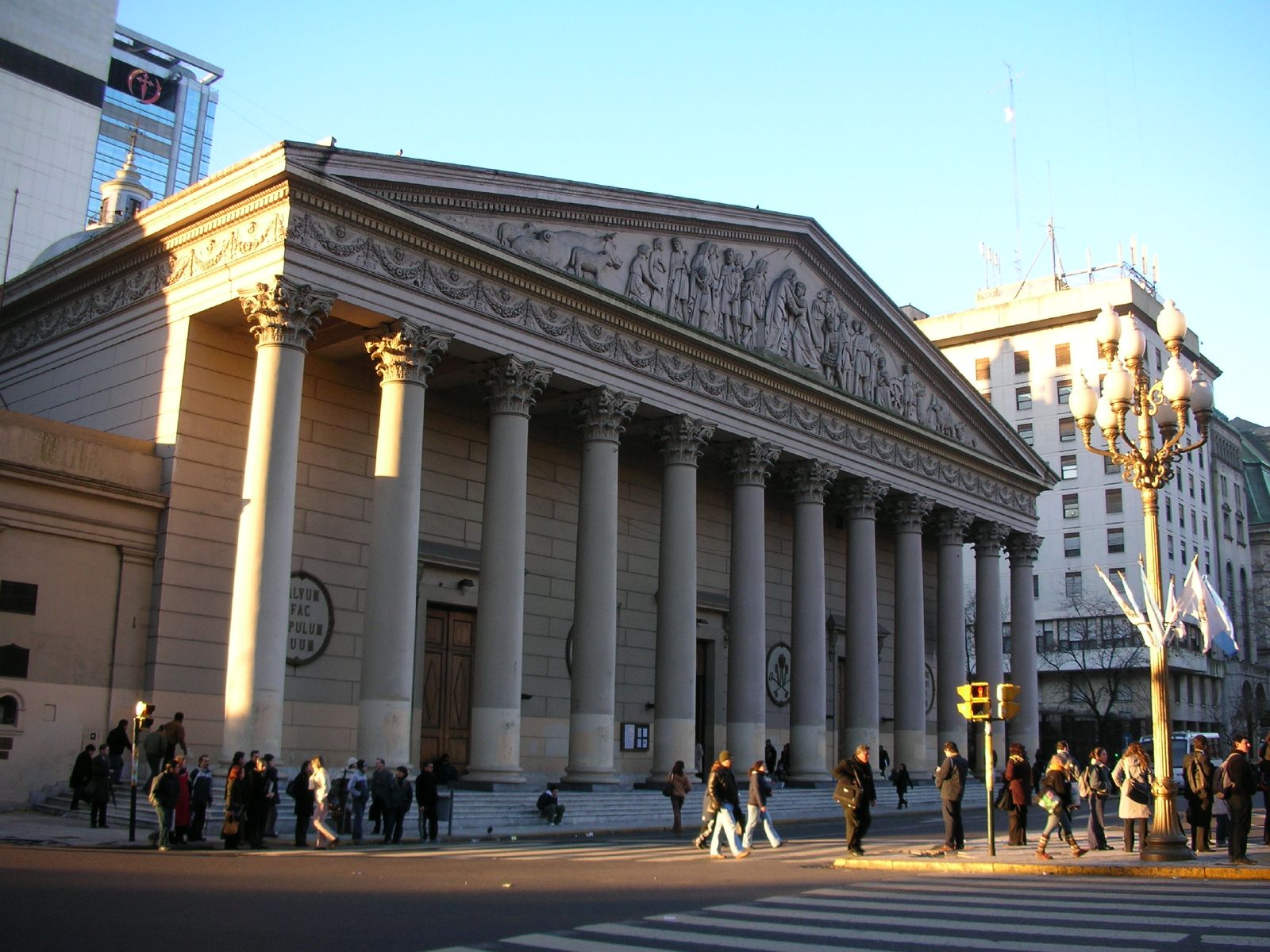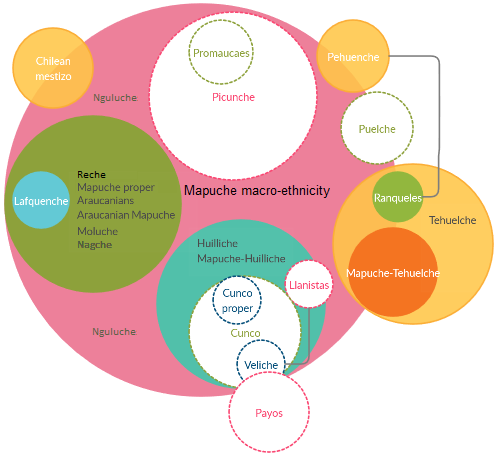|
Benei Sión
Benei Sión, also known as Sabatarios and Cabañistas in Chile, are an ethno-religious group that believe in the Iglesia del Nuevo Pacto (Church of the New Pact).Bargman, Daniel Fernando. 1994Entre el Cristianismo y el Judaísmo: La Iglesia Israelita del Nuevo Pacto University of Buenos Aires. The group originated in Chile where it had by 1994 around 6000 members but is present since the early 1950s in Argentina via chain migration where it had 3000 members by 1994. It has been proposed that the group derives from Crypto-Jews active in colonial Chile. While originating in the Araucanía Region of Chile the group deny to be Mapuche (Araucanian). One leader has been quoted saying "We are Jews and that's how we feel, because we have the same aspirations as the Jewish people". See also * Amazonian Jews * History of the Jews in Chile * Subbotnik Jews Subbotniks ( rus, Субботники, p=sʊˈbotnʲɪkʲɪ, "Sabbatarians") is a common name for adherents of Russian religious ... [...More Info...] [...Related Items...] OR: [Wikipedia] [Google] [Baidu] |
Chile
Chile, officially the Republic of Chile, is a country in western South America. It is the southernmost country in the world and the closest to Antarctica, stretching along a narrow strip of land between the Andes, Andes Mountains and the Pacific Ocean. Chile had a population of 17.5 million as of the latest census in 2017 and has a territorial area of , sharing borders with Peru to the north, Bolivia to the northeast, Argentina to the east, and the Drake Passage to the south. The country also controls several Pacific islands, including Juan Fernández Islands, Juan Fernández, Isla Salas y Gómez, Desventuradas Islands, Desventuradas, and Easter Island, and claims about of Antarctica as the Chilean Antarctic Territory. The capital and largest city of Chile is Santiago, and the national language is Spanish language, Spanish. Conquest of Chile, Spain conquered and colonized the region in the mid-16th century, replacing Incas in Central Chile, Inca rule; however, they Arauco War ... [...More Info...] [...Related Items...] OR: [Wikipedia] [Google] [Baidu] |
History Of The Jews In Chile
The history of the Jews in Chile dates back to the arrival of Europeans to the country. Over time, Chile has received several contingents of Jewish immigrants. Currently, the Jewish community in Chile comes mainly from the migrations occurring in the 19th and 20th centuries, mostly of Ashkenazi background. Chile is home to the 3rd largest Jewish community in South America with a population estimated to be between 15,700 and 16,000 as of 2025. This makes it one of the largest Jewish communities in South America, after Argentina and Brazil. Most of the community is concentrated in Santiago, with smaller groups in other regions. representing 0.08% of the total Chilean population. The total amount of Chileans with Jewish ancestry, however, is roughly 28,000 (defined as people having at least one Jewish parent or grandparent, and any spouse of such person). Migration history Spanish colonization and settlement The first Jews arrived in Chile with the Spanish conquistadors, se ... [...More Info...] [...Related Items...] OR: [Wikipedia] [Google] [Baidu] |
Jewish Argentine History
Jews (, , ), or the Jewish people, are an ethnoreligious group and nation, originating from the Israelites of ancient Israel and Judah. They also traditionally adhere to Judaism. Jewish ethnicity, religion, and community are highly interrelated, as Judaism is their ethnic religion, though it is not practiced by all ethnic Jews. Despite this, religious Jews regard converts to Judaism as members of the Jewish nation, pursuant to the long-standing conversion process. The Israelites emerged from the pre-existing Canaanite peoples to establish Israel and Judah in the Southern Levant during the Iron Age. John Day (2005), ''In Search of Pre-Exilic Israel'', Bloomsbury Publishing, pp. 47.5 8'In this sense, the emergence of ancient Israel is viewed not as the cause of the demise of Canaanite culture but as its upshot'. Originally, Jews referred to the inhabitants of the kingdom of JudahCf. Marcus Jastrow's ''Dictionary of the Targumim, Talmud Babli, Talmud Yerushalmi and Mid ... [...More Info...] [...Related Items...] OR: [Wikipedia] [Google] [Baidu] |
Groups Claiming Jewish Descent
A group is a number of persons or things that are located, gathered, or classed together. Groups of people * Cultural group, a group whose members share the same cultural identity * Ethnic group, a group whose members share the same ethnic identity * Religious group (other), a group whose members share the same religious identity * Social group, a group whose members share the same social identity * Tribal group, a group whose members share the same tribal identity * Organization, an entity that has a collective goal and is linked to an external environment * Peer group, an entity of three or more people with similar age, ability, experience, and interest * Class (education), a group of people which attends a specific course or lesson at an educational institution Social science * In-group and out-group * Primary, secondary, and reference groups * Social group * Collectives Philosophy and religion * Khandha, a Buddhist concept of five material and mental factors ... [...More Info...] [...Related Items...] OR: [Wikipedia] [Google] [Baidu] |
Ethnic Groups In Chile
An ethnicity or ethnic group is a group of people with shared attributes, which they collectively believe to have, and long-term endogamy. Ethnicities share attributes like language, culture, common sets of ancestry, traditions, society, religion, history or social treatment. Ethnicities may also have a narrow or broad spectrum of genetic ancestry, with some groups having mixed genetic ancestry. ''Ethnicity'' is sometimes used interchangeably with ''nation'', particularly in cases of ethnic nationalism. It is also used interchangeably with '' race'' although not all ethnicities identify as racial groups. By way of assimilation, acculturation, amalgamation, language shift, intermarriage, adoption and religious conversion, individuals or groups may over time shift from one ethnic group to another. Ethnic groups may be divided into subgroups or tribes, which over time may become separate ethnic groups themselves due to endogamy or physical isolation from the parent group. Co ... [...More Info...] [...Related Items...] OR: [Wikipedia] [Google] [Baidu] |
Ethnic Groups In Argentina
Argentina has a racially and ethnically diverse population. The territory of what today is Argentina was first inhabited by numerous indigenous peoples. The first white settlers came during the period of Spanish colonization, beginning in the 16th century. The Spaniards imported African slaves, who would go on to become the first Afro-Argentines. Following independence from Spain in the 19th century and well into the 20th century, numerous migration waves took place, with Argentina being the second most popular destination for migrants in the early 20th century, after the United States. Most of these migrants came from Europe. Most modern-day Argentines are descendants of these 19th and 20th century immigrants, with about 97% of the population being of full or partial European ancestry, while an estimated 31% or 56% have some indigenous or mestizo ancestry, and 5% or 9% have some African or mulatto ancestry. In the , some 955,032 Argentines (2.38% of the population) identif ... [...More Info...] [...Related Items...] OR: [Wikipedia] [Google] [Baidu] |
Christianity In Chile
Christianity is the most widely professed religion in Chile, with Catholicism being its largest denomination. The country is secular and the freedom of religion is established under its Constitution. Historically, the indigenous peoples in Chile observed a variety of religions before the Spanish conquest in the 16th century. During Spanish rule and the first century of Chilean independence, the Catholic Church was one of the most powerful institutions in the country. In the late 19th century, liberal policies (the so-called ''Leyes laicas'' or "lay laws") started to reduce the influence of the clergy and the promulgation of a new Constitution in 1925 established the separation of church and state. A 2023 AmericasBarometer survey revealed that almost 40% of the Chilean population is unaffiliated, making Chile the second least religious country in Latin America, after Uruguay. Demography In the last census in Chile, in the year 2002, indigenous people make up 5 percent (780, ... [...More Info...] [...Related Items...] OR: [Wikipedia] [Google] [Baidu] |
Christianity In Argentina
Christianity is the most widely professed religion in Argentina, with Catholic Church being its largest denomination. This historical background is very much due to the Spanish influence brought about through the newly conquered territories. However, affiliation with Protestant churches is increasing and immigration throughout the 20th century has brought other religions from various regions to Argentina.Creencias, valores y actitudes en la sociedad argentina conicet.gov.ar, 29 January 2020 (Spanish) is a natio ... [...More Info...] [...Related Items...] OR: [Wikipedia] [Google] [Baidu] |
Subbotnik Jews
Subbotniks ( rus, Субботники, p=sʊˈbotnʲɪkʲɪ, "Sabbatarians") is a common name for adherents of Russian religious movements that split from Sabbatarian sects in the late 18th century. The majority of Subbotniks were converts to Rabbinic or Karaite Judaism from Christianity. Other groups included Judaizing Christians and Spiritual Christians. There are three main groups of people described as Subbotniks: * Judaizing Talmudists: Subbotnik converts to Rabbinic Judaism, also described as "Gery" (), "Talmudisty" (), or "Shaposhniki". * Karaimites or Karaite Subbotniks (): also described as "Russian Karaites" (), considering themselves as adherents of Karaite Judaism. They recognize only the scriptural authority of the Torah and reject the Talmud; however, it has been reported that they do not practice circumcision. * Subbotnik Molokans (): in contrast to the other Subbotnik sects, they recognize the Gospel, but also practice some of the rules and precepts of the ... [...More Info...] [...Related Items...] OR: [Wikipedia] [Google] [Baidu] |
Amazonian Jews
Amazonian Jews (; ; ; ) are the Jews of the Amazon basin, mainly descendants of Moroccan Jews who migrated to northern Brazil and Peru in the 19th and early 20th centuries. The migrants were attracted to the growing trade in the Amazon region, especially during the rubber boom, as well as to the newly established religious tolerance. They settled in localities along the Amazon River, such as Belém, Cametá, Santarém, Óbidos, Parintins, Itacoatiara and Manaus in Brazil, some venturing as far as Iquitos in Peru. During the 20th century, the Jews of the region became concentrated in its urban areas, and some moved to other Brazilian cities such as Rio de Janeiro and São Paulo, joining other Jewish communities there. In the 21st century, in northern Brazil there were significant Jewish communities in Belém and Manaus, active with various institutions, as well as smaller communities in Macapá and Porto Velho. Of the approximately 120,000 Jews in the whole country, about 20% w ... [...More Info...] [...Related Items...] OR: [Wikipedia] [Google] [Baidu] |
Mapuche
The Mapuche ( , ) also known as Araucanians are a group of Indigenous peoples of the Americas, Indigenous inhabitants of south-central Chile and southwestern Argentina, including parts of Patagonia. The collective term refers to a wide-ranging ethnicity composed of various groups who share a common social, religious, and economic structure, as well as a common linguistic heritage as Mapudungun speakers. Their homelands once extended from Choapa River, Choapa Valley to the Chiloé Archipelago and later spread eastward to Puelmapu, a land comprising part of the Pampas, Argentine pampa and Patagonia. Today the collective group makes up over 80% of the Indigenous peoples in Chile and about 9% of the total Chilean population. The Mapuche are concentrated in the Araucanía (historic region), Araucanía region. Many have migrated from rural areas to the cities of Santiago and Buenos Aires for economic opportunities, more than 92% of the Mapuches are from Chile. The Mapuche traditional e ... [...More Info...] [...Related Items...] OR: [Wikipedia] [Google] [Baidu] |





